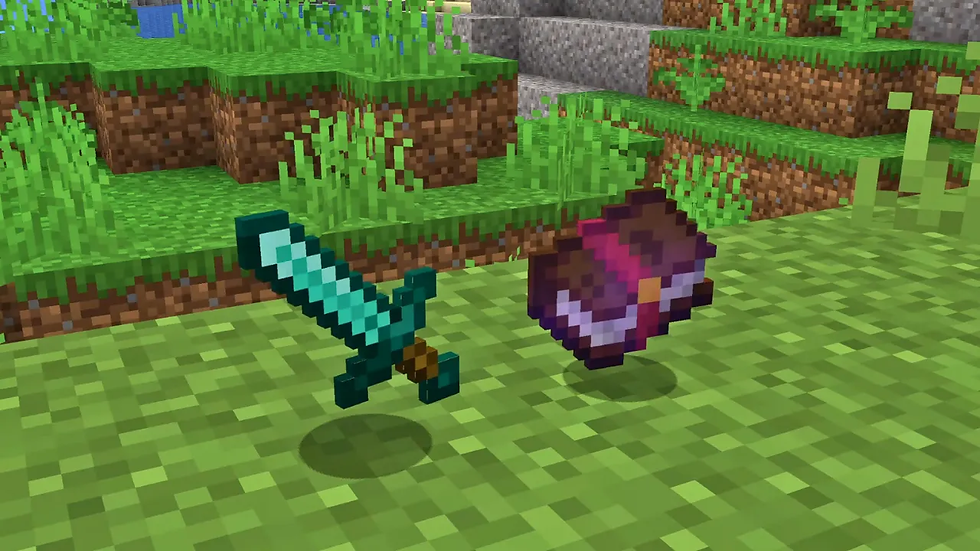Boost Your Gaming Performance: 23 Tips to Speed Up Your PC
- Performance Gaming

- Oct 20, 2023
- 8 min read

In the rapidly evolving world of PC gaming, maintaining a smooth and glitch-free gaming experience can sometimes be a challenge. Over time, you might notice your gameplay becoming slower and less fluid. But fear not; in this article, we'll explore a variety of strategies to enhance your computer's speed and performance for gaming. Whether you're a beginner or a seasoned gamer, these tips and tweaks can help you optimize your gaming rig and make your gaming sessions more enjoyable. With the continuous advancements in PC gaming, it's crucial to keep your computer in top shape to enjoy the latest games. Here, we'll discuss various methods to boost your gaming performance. From simple adjustments to more advanced techniques, you'll find a solution that suits your needs.
Checking Windows Updates

Before diving into the technical tweaks, let's start with a fundamental step. Keeping your Windows operating system up to date is vital for a smooth gaming experience. New updates often include performance improvements and security enhancements, ensuring your device runs smoothly and securely.
For Windows 10: Click the Start button, then navigate to "Settings" > "Update & Security" > "Windows Update."
For Windows 11: Click the Start button, then go to "Settings" > "Windows Update."
Managing Notifications

Notifications can be a distraction during your gaming sessions. Turning them off can help maintain your focus and prevent your computer from pulling you out of the game.
For Windows 10: Go to "Settings" > "System," then click on "Focus Assist" or type "focus assist" in the search bar in the Settings taskbar and select "Focus assist settings." Choose "Alarms Only" to turn off all notifications.
For Windows 11: Go to "Settings" > "System" > "Notifications." Enable "Do not disturb" by selecting "On."
Activating Game Mode

Windows 10 and 11 come with a built-in Game Mode designed to enhance your gaming experience. It optimizes system resources by turning off background programs, preventing unexpected restarts, and improving frame rates for your games.
To enable Game Mode:
Press the Start button and type "Settings" in the search box, then select "Settings."
Choose "Gaming," then "Game Mode."
Click the switch to turn Game Mode on.
Adjusting Visual Effects

While impressive graphics are essential for immersive gaming, adjusting your visual settings can significantly boost your PC's performance. Lowering graphics settings can make your games run more smoothly.
To do this:
Click the Start button and type "Settings" to open it.
Type "performance" into the Settings search bar and select "Adjust the appearance and performance of Windows."
In the pop-up box, select "Adjust for best performance."
If you have multiple screens, consider using just one during gaming for better performance.
Hardware Acceleration

Hardware-accelerated GPU scheduling can help optimize your gaming performance and reduce network latency. This feature is available on Windows 10 and 11.
To enable it:
Press the Start button, search for "Settings," and hit Enter.
Select "Display" from the "System" page, then click on "Graphics."
Click on "Change default graphics settings" at the top of the page.
Toggle "Hardware-accelerated GPU scheduling" to "On." If it wasn't on already, restart your computer.
Pointer Precision

Enhanced pointer precision can increase cursor speed, but it's not ideal for gaming. It can disrupt your accuracy while playing.
To disable it:
Open the Control Panel and search for "Mouse" in the upper-right search bar.
Click on "Change Mouse Settings" and select the "Pointer Options" tab.
Under "Motion," uncheck the box next to "Enhance pointer precision."
Click "Ok" to confirm.
Removing Unwanted Programs

Unused apps and programs can slow down your device and impact your gaming experience. Before uninstalling, ensure that the program is not essential for running your games.
To remove old programs:
For Windows 11: Select Start > "All Apps," then right-click the app you don’t need and hit “Uninstall.”
For Windows 10: Select Start, then right-click the app you don’t need and hit “Uninstall.”
For Windows 10/11: Search "control panel" in the taskbar and hit Enter. Select "Programs" > "Programs and Features." Right-click the program you want to remove and select "Uninstall."
Disabling In-Game Overlays

In-game overlays are convenient for tasks like screen recording and taking screenshots, but they can consume bandwidth and impact performance while gaming. Here's how to turn off some common overlays:
Nvidia GeForce Experience: On the desktop, click on the Nvidia icon and select "Nvidia GeForce Experience." In the app, disable "In-Game Overlay."
AMD Radeon ReLive: On the desktop, double-click the Radeon icon and select "ReLive." Under "Global," disable "ReLive."
Xbox Game DVR: In Windows 10, turn off "Record game clips, screenshots, and broadcast using Game Bar."
Discord: On the desktop, double-click the Discord icon, select "Overlay," and switch "Enable in-game overlay" off.
Twitch: On the desktop, double-click the Twitch icon, select "In-Game," and toggle "In-Game Overlay" off.
Steam: Open the Steam app, go to "Settings" > "In-game," and disable "Enable the Steam Overlay while in-game."
EA: In the Origin app, go to "Settings," then "Application," and disable "In-game overlay."
Adjusting Startup Settings

Some applications start automatically when you open your computer, consuming processing power. Disabling unnecessary startup programs can boost your gaming performance.
To disable startup apps:
Press Ctrl+Shift+Esc to open the Task Manager.
Select the "Startup apps" tab.
Right-click on any apps you don't regularly use and select "Disable."
Optimizing Power Settings

Setting your power mode to a higher performance setting can maximize your gaming experience, but it may reduce battery life if not plugged in.
To change the power mode:
Click the Start button, then go to "Settings" > "System" > "Power & Battery."
Next to "Power Mode," select "Best performance" from the drop-down menu.
Changing Monitor Refresh Rate

A higher refresh rate can make your games appear smoother, especially for fast-paced games. The refresh rate determines how often the image on your screen refreshes.
For Windows 10: Click the Start button, then navigate to "Settings" > "System" > "Display" > "Advanced display settings." Under "Refresh rate," select your preferred rate.
For Windows 11: Click the Start button, then go to "Settings" > "System" > "Display" > "Advanced display." Choose your desired refresh rate.
Cleaning Temp Files

Temporary files can consume resources and slow down your system. Cleaning out the Temp folder can help maintain your PC's performance.
To clean your Temp folder:
Press the Windows key+R to open the Run command, then type "%temp%" and press "Ok."
Alternatively, search "%appdata%" in the desktop search bar. Click "View" > "Show" > "Hidden items." Navigate to "AppData" > "Local" > "Temp" and delete its contents.
Repairing System Files

Corrupted system files can lead to game crashes and lag. To repair these files, use Windows' built-in System File Checker tool.
To scan and restore corrupted files:
Select the Start button, search "Command Prompt" in the search bar, then select "Run as administrator." Click "Yes" if prompted.
Type the following command and press Enter: "DISM.exe /Online /Cleanup-image /Restorehealth."
Resetting Shader Cache

Resetting your shader cache can help improve your game's performance. Shader cache stores data used by your GPU for faster loading of shaders.
To reset your Nvidia shader cache:
Right-click the Windows desktop and click "Nvidia Control Panel." In the "Global Settings" section, turn off "Shader Cache."
Restart your computer.
In the Nvidia GeForce Experience app, reinstall your graphics drivers by clicking "Reinstall driver" under the menu.
After reinstalling the drivers, search "disk cleanup" in the desktop taskbar and select "Disk Cleanup." Choose the OS "(C:)" drive and click "DirectX Shader Cache." Click "Clean up system files" and confirm.
Using Ethernet Instead of Wi-Fi

An ethernet connection provides faster and more stable data transfer than Wi-Fi. If possible, use an ethernet cable to enhance your online gaming experience.
To enable Ethernet on your computer:
Click the Start button, then type "control panel" and select the "Control Panel" app.
Go to "Network and Internet" > "Network and Sharing Center" > "Change adapter settings."
Right-click on the "Ethernet" icon and click "Enable."
Changing DNS Settings

Choosing a different DNS server can improve network performance and reduce lag. You can select a DNS server that suits your needs.
To change your DNS settings:
Go to "Settings" and click "Network & Internet."
Select "Properties," and under "DNS server assignment," click "Edit." Choose "Manual" and enable "IPv4." Enter the preferred and alternate DNS server addresses.
Here are some recommended DNS servers:
Google: Preferred DNS Server: "8.8.8.8" Alternate DNS Server: "8.8.4.4"
Cloudflare: Preferred DNS Server: "1.1.1.1" Alternate DNS Server: "1.0.0.1"
OpenDNS: Preferred DNS Server: "208.67.222.222" Alternate DNS Server: "208.67.220.220"
Comodo Secure DNS: Preferred DNS Server: "8.26.56.26" Alternate DNS Server: "8.20.247.20"
Level3: Favored DNS Server: "209.244.0.3" Exchange DNS Server: "209.244.0.4"
Quad9: Preferred DNS Server: "9.9.9.9" Alternate DNS Server: "9.9.9.9"
Updating Graphics Drivers

Regularly updating your graphics drivers is crucial for optimal gaming performance. Both Nvidia and AMD frequently release new drivers that can significantly enhance your computer's ability to handle games.
To update your graphics drivers:
Identify your graphics card by going to "System Information." Look for your graphics adapter model.
Download the correct drivers from Nvidia, AMD, or Intel's official websites.
Defragment or Trim Your Drive

Over time, your hard drive can become fragmented, leading to slower performance. Defragmenting or optimizing your drive can increase speed.
To optimize your drive:
Open the Start Menu and type "defragment." Select "Defragment and Optimize Drives."
Choose the drive you want to optimize and click "Optimize."
TRIM should be enabled by default, but if it's not, follow these steps:
Search "command" in the Start search bar and open "Command Prompt."
Enter the command "Fsutil behavior query disabledeletenotify" and hit Enter. Ensure that it responds with "= 0."
If not, enter the command "fsutil behavior set DisableDeleteNotify 0." If you still don't receive the same response, consider updating your firmware.
Optimizing the Windows Registry

Modifying the Windows Registry can help allocate more resources to gaming. Here's how to optimize the registry:
Type "Run" into the Windows search bar and press Enter. In the search box, type "regedit" and select "Ok."
Navigate to "HKEY_LOCAL_MACHINE" > "SOFTWARE" > "Microsoft" > "Windows NT" > "CurrentVersion" > "Multimedia" > "SystemProfile."
Double-click the "NetworkThrottlingIndex" property, delete the current value, and replace it with "FFFFFFFF."
Double-click the "SystemResponsiveness" property and set the value to "0."
Under "Multimedia," select "Tasks" > "Games."
Double-click "GPU Priority" and set the value to "8."
Double-click "Priority" and set the value to "6."
Double-click "Scheduling Category" and set the value to "High."
Disabling Superfetch and Prefetch

Disabling Superfetch and Prefetch can free up system resources, enhance CPU performance, and improve your gaming experience.
To disable Superfetch and Prefetch:
Search for "regedit" in the Start search box and navigate to "HKEY_LOCAL_MACHINE" > "SYSTEM" > "CurrentControlSet" > "Control" > "SessionManager" > "Memory Management" > "PrefetchParameters."
Right-click on "EnablePrefetcher" and set the "Value data" to 0.
Repeat the same steps for "EnableSuperfetch."
Restart your computer.
Overclocking Your Graphics Card

Overclocking your graphics card can boost gaming performance, but it may reduce the card's lifespan. Follow these steps to overclock:
Download benchmarking and analytics software like Unigine Superposition or Unigine Heaven.
Run the benchmark with the "1080p" preset. Disable Vsync.
Record the minimum, maximum, and average frame rates.
Download a GPU tweaking tool, such as MSI Afterburner.
Push up the "Power Limit" slider and set the "Temperature Limit" slightly lower than the maximum.
Increase the core clock by 5-10 MHz and apply it.
Run the benchmark again, monitoring temperature to prevent overheating or graphical glitches.
Repeat the process until the benchmark fails, then revert to the last stable clock speed.
Conduct a stress test with Unigine Heaven to ensure stability.
Play a graphics-intensive game to confirm the chosen frequency works well.
Upgrading Your Hardware

Upgrading your hardware, such as your SSD or RAM, can significantly enhance your gaming experience. Here's what to consider:
Choose an SSD with at least 500 GB, as many modern games require significant storage space.
Identify your motherboard and CPU to determine the supported RAM type and capacity.
Start with RAM or a Graphics Card upgrade if you want to enhance performance without a full system upgrade.
Additional Tips and Warnings
Tips:
Always check the minimum requirements for the games you want to play to ensure your PC can run them.
Consider upgrading your hardware incrementally, starting with RAM or a Graphics Card.
Ensure compatibility between your CPU and motherboard socket before upgrading the processor.
Run problematic programs as an administrator for troubleshooting.
Keep your drivers up to date for optimal performance.
Warnings:
Overclocking may reduce the lifespan of your graphics card and could void the warranty.
Download software only from trusted sources to avoid potential risks.
Be cautious when overclocking, as it can generate more heat and consume additional power. Ensure your cooling system and PSU can handle it.
Incorporating these steps can help you optimize your PC's performance for gaming, ensuring a smoother and more enjoyable experience.

Product Title
16 px collapsible text is perfect for longer content like paragraphs and descriptions. It’s a great way to give people more information while keeping your layout clean. Link your text to anything, including an external website or a different page. You can set your text box to expand and collapse when people click, so they can read more or less info.
$320

Product Title
16 px collapsible text is perfect for longer content like paragraphs and descriptions. It’s a great way to give people more information while keeping your layout clean. Link your text to anything, including an external website or a different page. You can set your text box to expand and collapse when people click, so they can read more or less info.
$900

Product Title
16 px collapsible text is perfect for longer content like paragraphs and descriptions. It’s a great way to give people more information while keeping your layout clean. Link your text to anything, including an external website or a different page. You can set your text box to expand and collapse when people click, so they can read more or less info.
$560






















